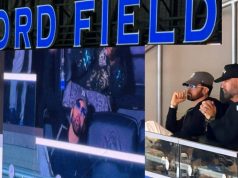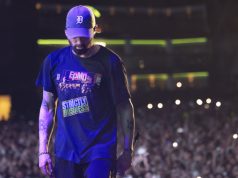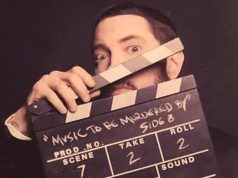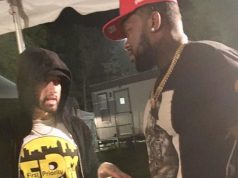The big piece in The New York Times Magazine talks about Kendrick’s past and future and takes a look at his creative process.
At the moment Kendrick is transitioning from his lengthy collaboration with Top Dawg Entertainment to a full-time dedication to pgLang, a multidisciplinary entertainment company he founded with Dave Free, his school friend, manager, filmmaker, and TDE co-president.
One of their recent creative projects includes the video for “The Heart Part 5,” the lead single off “Mr. Morale & The Big Steppers.” In the article, a journalist traced the video’s backstory down to the beginning:
“The seeds of the video’s concept were sown a couple of years before its release, during a time when Kendrick and Dave were thinking about polarizing figures: how people behave in and out of the hot seat; whether a public figure can reveal his flaws and maintain wide acceptance.
Dave and Kendrick had a meeting with the creators of “South Park,” Matt Stone and Trey Parker, with whom they’re developing a live-action comedy. Stone, who, with Parker, owns a company specializing in deepfake technology, offered to show it to them. “You see Kendrick turned into Tupac, Kendrick turned into Kanye, and I think we had Eminem,” Stone told me over a Zoom call. He told Kendrick and Dave that they could be among the first to use the technology for one of their videos. On their way out, Dave and Kendrick turned to each other and exclaimed, “What if we did the Jussie Smollett!”
The video for “The Heart Part 5” begins with the epigraph “I am. All of us,” attributed to Kendrick’s handle oklama, and shows him morphing into deepfakes of O.J. Simpson, Kanye, Jussie, Will Smith, Kobe Bryant and Nipsey Hussle — Black men who exist somewhere between problematic and tragic. Over a sample of Marvin Gaye’s soulful “I Want You,” Kendrick, in a crisp white T-shirt, his hair wild against a blood red background, begins critiquing the predation, violence and materialism of “the culture,” moves on to narrating the shock of receiving the news of Nipsey’s death and ends rapping in the persona of his slain friend, precisely mimicking his gestures”.
Well, in this context it makes sense that Eminem didn’t make it to the final cut. Kendrick and his creative partner are very much focused on the challenges the Black culture faces, and, probably did not want to dilute their message. And in any way, it would be better to see K.Dot collaborating with real Slim Shady rather than playing with his avatar.
The full article is available on the magazine’s website.












